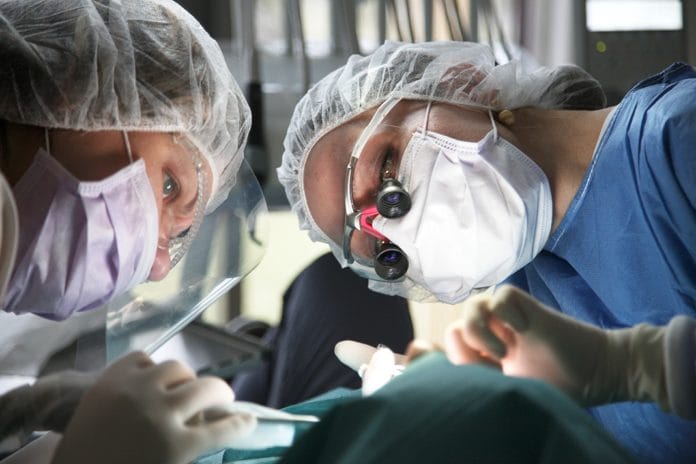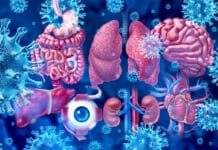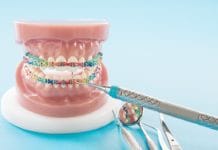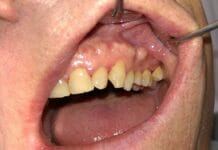So many things will be changing before we are able to go back to traditional patient care. Personal protective equipment, sanitizing wipes, aerosol control, and barriers will, of course, be the main priority. Secondly, we also need to define infection control standards for the common areas such as will coffee service be permitted, proximity of reception area seating, and will magazines even be allowed to be shared due to possible cross-contamination.
A host of changes with appointment scheduling to begin catching up after several months off will also need to be implemented, and will nonpatients such as family or drivers be allowed to remain in the office during treatment.
For me, I’m hoping one of the many changes will be in our daily patient education. During the COVID-19 pandemic, I realized how few true dental emergencies there are versus a patient’s perception of a dental emergency or desire for convenient dental treatment.
A true dental emergency, as we all know, is injury, pain, swelling, or infection. The calls many offices are receiving now are unique in that many are for preventive care patients who have put off treatment and now find themselves with plenty of “free” time. Patients are several years overdue for prophylaxis or periodontal treatments. They call in requesting an emergency appointment solely because it fits into their current quarantine schedule, or they are seeing calculus buildup and staining and decided that it must be an emergency.
My personal favorite is the patient who decided their years of recession need grafting today because they will have several weeks off work obligations now, allowing time for healing. Of course, as these calls are received, patients are being carefully screened and informed that only “true dental emergencies” can be treated at this time, and they will be contacted to schedule as dental offices are allowed to open the schedule for non-essential treatments.
Some Delayed Treatments Are Resurfacing
Of course, some situations are true dental emergencies and should be treated immediately. Still, many of these patients were diagnosed with dental issues several years prior and declined treatment or decided to wait for convenience in their schedule. How often do we see a patient with a one surface area of tooth decay that they chose to delay and then becomes an interproximal lesion?
Patients have literally delayed a simple restoration so long that they are now in the middle of a pandemic needing endodontic treatment! This jeopardizes their own health by leaving quarantine as well as the dental practice team’s health.
Local specialists are reporting an average of four patients per day in endodontic and oral surgery offices. Keeping their team safe is difficult due to the limited availability of gowns and masks, which puts everyone at a higher risk of contracting the virus.
Oral surgeons are having to treat patients for extractions that were recommended in years past as well. These should have been completed in a timely fashion to avoid pain and further breakdown. It seems they are also receiving calls for “emergency” wisdom teeth extractions simply due to students being home and more available plus the added benefit of increased time for healing.
Some patients are calling for true dental emergencies such as broken teeth, pain, or infections, and we do want to treat those issues, but certainly not enough to warrant so many specialists having to provide treatment.
Patient Education
What if, when we are again allowed to practice non-essential treatment, we refocus on patient education, stressing the importance of having diagnosed treatment completed before it becomes more invasive? What will it take to have our message heard and treatment accomplished?
For those patients who were seen on an emergency basis, will they easily understand the risks? But how do we encourage our patients in upcoming post-pandemic months without using fear? For some, finances are a great motivator. Showing the clear savings from a one-surface, two-surface, and three-surface restorations can work, or even adding in a crown and potential endodontic treatment might be of benefit.
Discussing the potential for infection, swelling, pain, and possible need for invasive treatment may work. Perhaps we can try something as simple as, if you cut your finger and couldn’t stop the bleeding, would you reach out for medical treatment and possibly have sutures placed or would you just let it continue to bleed? Dental is the same in that if you just ignore the problem, larger problems develop in the future.
We all know allowing periodontal conditions to remain untreated leads to further issues of bone loss, potential tooth loss, and possibly adding to systemic disease. What words are we missing when explaining why periodontal treatment and routine periodontal maintenance appointments are necessary? How do we help show the importance of tissue grafting before the recession is so severe it can no longer be performed?
With the absence of pain, what tools do we have to motivate patients to achieve their ultimate health? Today let’s come up with an action plan to help deliver the message of necessary treatment and rationale so that when we are back to practice, we can truly get the job done.












